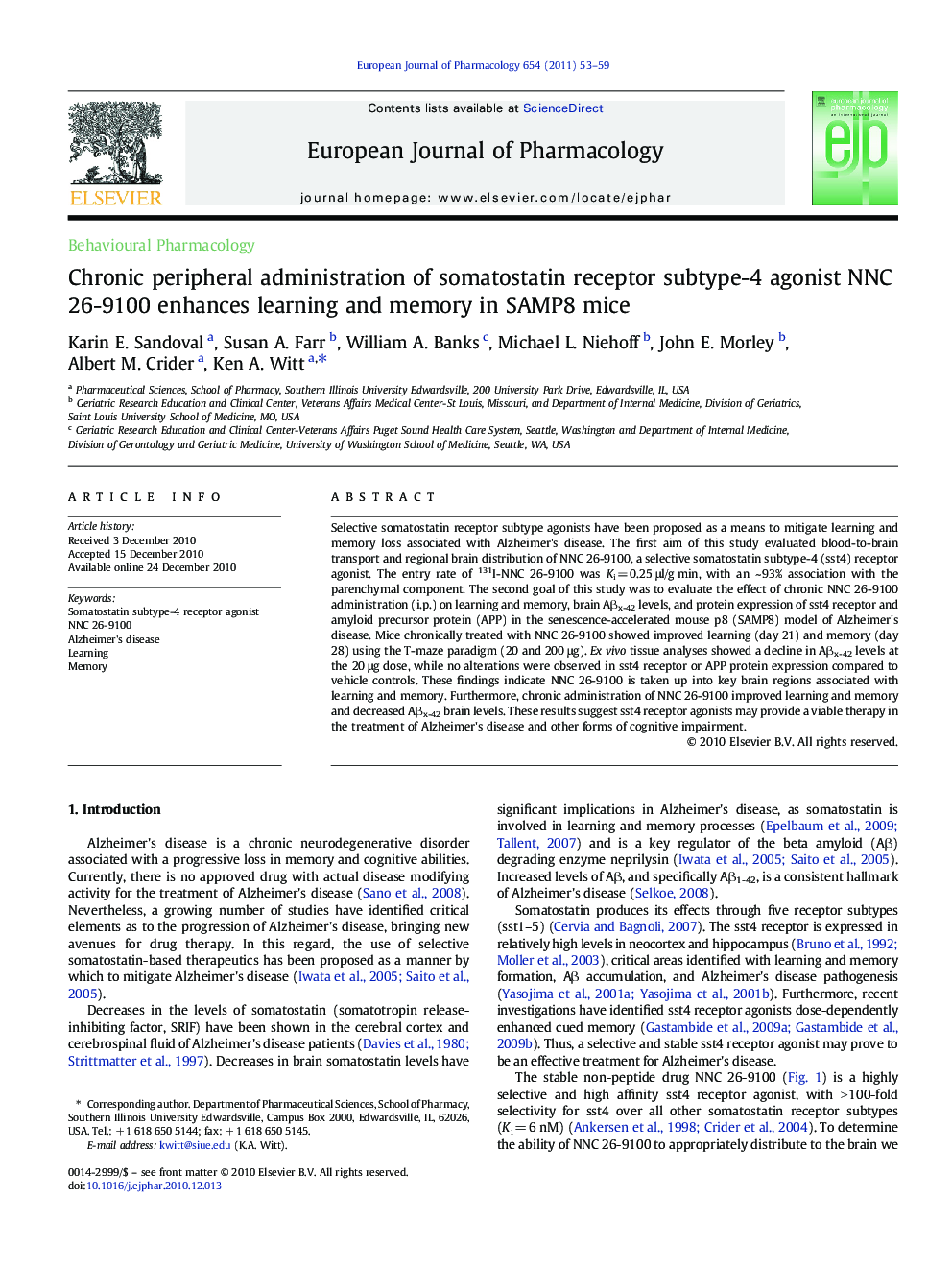| Article ID | Journal | Published Year | Pages | File Type |
|---|---|---|---|---|
| 5830436 | European Journal of Pharmacology | 2011 | 7 Pages |
Abstract
Selective somatostatin receptor subtype agonists have been proposed as a means to mitigate learning and memory loss associated with Alzheimer's disease. The first aim of this study evaluated blood-to-brain transport and regional brain distribution of NNC 26-9100, a selective somatostatin subtype-4 (sst4) receptor agonist. The entry rate of 131I-NNC 26-9100 was Ki = 0.25 μl/g min, with an ~ 93% association with the parenchymal component. The second goal of this study was to evaluate the effect of chronic NNC 26-9100 administration (i.p.) on learning and memory, brain Aβx-42 levels, and protein expression of sst4 receptor and amyloid precursor protein (APP) in the senescence-accelerated mouse p8 (SAMP8) model of Alzheimer's disease. Mice chronically treated with NNC 26-9100 showed improved learning (day 21) and memory (day 28) using the T-maze paradigm (20 and 200 μg). Ex vivo tissue analyses showed a decline in Aβx-42 levels at the 20 μg dose, while no alterations were observed in sst4 receptor or APP protein expression compared to vehicle controls. These findings indicate NNC 26-9100 is taken up into key brain regions associated with learning and memory. Furthermore, chronic administration of NNC 26-9100 improved learning and memory and decreased Aβx-42 brain levels. These results suggest sst4 receptor agonists may provide a viable therapy in the treatment of Alzheimer's disease and other forms of cognitive impairment.
Keywords
Related Topics
Life Sciences
Neuroscience
Cellular and Molecular Neuroscience
Authors
Karin E. Sandoval, Susan A. Farr, William A. Banks, Michael L. Niehoff, John E. Morley, Albert M. Crider, Ken A. Witt,
